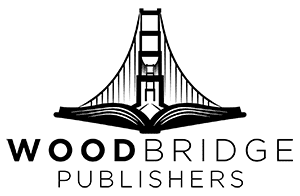Editing a book manuscript is a meticulous process that elevates a rough draft into a polished, publish-ready work. Many writers struggle with editing a manuscript, often feeling overwhelmed by the sheer number of things that need refining. A professional-level edit requires strategic focus and multiple passes. Below, we delve into ten detailed, insightful tips that will help you edit like a pro.
1. Distance Yourself from the Manuscript Before Editing
One of the best practices for editing manuscripts is to take a step back. After finishing your manuscript, let it sit untouched for a few days or even weeks before beginning the editing process. This break allows your brain to reset, helping you spot errors, plot inconsistencies, and stylistic weaknesses more effectively.
Example: If you’ve just completed a novel, set a reminder to begin editing in two weeks. During this time, read other books, work on a new project, or take a creative break. When you return, you’ll be able to approach the manuscript with greater objectivity.
Why It Works: Distance helps break emotional attachment, making it easier to make tough cuts and refinements.
2. Begin with a Macro-Edit (Big Picture Revisions)
Before diving into line edits and grammar, start with a macro-edit, focusing on structure, pacing, and story arc. Identify any plot holes, weak character motivations, or areas where the tension falls flat. Scrutinize the way your chapters flow and ensure each scene has a clear purpose.
Key Questions to Ask:
- Does the story start at the right moment, or do I need to cut the first few pages?
- Are there any unnecessary scenes that slow the pacing?
- Is the protagonist’s character arc satisfying and believable?
Example: If your novel begins with an extended description of the weather rather than an engaging action or conflict, consider trimming or reworking the introduction to hook the reader immediately.
Pro Tip: Create an outline post-draft to compare your intended structure with the final product. This helps pinpoint areas needing revision.
3. Strengthen Your Narrative Voice and Style
A strong narrative voice keeps readers engaged. While editing a book manuscript, analyze whether your writing style is consistent, engaging, and appropriate for your audience.
Pro Tip: Avoid overly complex or flowery prose unless it serves a specific stylistic purpose. Aim for clarity and impact.
Example: Instead of writing: “The incandescent glow of the celestial orb bathed the verdant meadow in an ethereal luminescence,” simplify it to “The moonlight cast a soft glow over the meadow.” The second version is more readable without sacrificing imagery.
Advanced Tip: Read your manuscript aloud or use text-to-speech software to catch awkward phrasing or unnatural rhythms.
4. Eliminate Redundant Words and Weak Phrases
Every word in your manuscript should serve a purpose. Redundant phrasing weakens prose and disrupts pacing. Best practices for editing manuscripts include eliminating unnecessary words to enhance clarity.
Watch Out For:
- “She nodded her head” → “She nodded”
- “He stood up” → “He stood”
- “Completely destroyed” → “Destroyed”
Example: Instead of “He whispered softly,” write “He whispered.” The word “whispered” already implies a soft tone.
Pro Tip: Search your manuscript for filler words like “very,” “really,” “just,” “that,” and “actually.” If they don’t add meaning, cut them.
5. Analyze Sentence Structure for Variety and Flow
Monotonous sentence structures bore readers. Mix short and long sentences to create rhythm and maintain engagement. Read your work aloud to identify clunky or robotic phrasing.
Example: Instead of: “She walked into the room. She looked around. She sat down. She sighed.” Try: “She walked into the room, scanning her surroundings before dropping into the chair with a sigh.”
Pro Tip: Use sentence length strategically. Shorter sentences increase tension. Longer sentences slow pacing and deepen description.
6. Ensure Consistency in Timeline, Characters, and Worldbuilding
Inconsistencies can break immersion and confuse readers. Keep track of character traits, setting details, and timeline events to ensure internal consistency.
Example: If your protagonist has blue eyes in Chapter 1 but green eyes in Chapter 12, readers will notice. Use a style sheet to track key details.
Pro Tip: Create a spreadsheet with columns for character descriptions, important events, and setting details to maintain accuracy.
7. Show, Don’t Tell – Make Readers Experience the Story
Great writing immerses readers in the story through vivid imagery and action rather than exposition.
Example: Instead of saying, “John was nervous about his speech,” show it: “John’s palms were slick with sweat as he tightened his grip on the podium.”
Advanced Tip: Identify passages where emotions are named (e.g., “She was angry.”) and rewrite them with physical actions that convey the emotion more powerfully.
8. Tighten Dialogue and Make It Sound Natural
Dialogue should mimic real conversation while serving a purpose. Cut filler words and avoid overly formal or robotic dialogue.
Example: Instead of “Hello, how are you today? I hope you are well,” write “Hey, how’s it going?” to keep the dialogue natural.
Pro Tip: Read dialogue aloud to ensure it sounds authentic. Ask yourself, “Would a real person say this?”
9. Conduct a Final Proofread for Grammar, Spelling, and Punctuation
Grammar and punctuation errors can make even the best story seem unpolished. While spellcheckers help, manual proofreading ensures precision.
Common Errors to Watch For:
- “Your” vs. “You’re”
- “Its” vs. “It’s”
- Misplaced commas and apostrophes
Tip: Read the manuscript backward, one sentence at a time, to catch overlooked mistakes.
Advanced Tip: Use editing tools like Grammarly or ProWritingAid, but always do a manual check to ensure stylistic consistency.
10. Get External Feedback Before Finalizing
A second opinion is invaluable. Beta readers, critique partners, or professional editors can offer insights that improve clarity, pacing, and engagement.
Example: A beta reader might point out that a side character disappears midway through the book, highlighting the need to resolve their storyline.
Pro Tip: Provide beta readers with a feedback form with targeted pacing, character development, and engagement questions.
Final Thoughts
Editing a manuscript is a multi-layered process requiring patience and attention to detail. By implementing these best practices, you can strengthen your work to a professional level and ensure a compelling, polished, and engaging final product.
Frequently Asked Questions
1. How do I balance cutting unnecessary content while keeping my manuscript engaging?
One of the biggest challenges in editing a book manuscript is knowing what to cut. A good rule of thumb is to remove anything that doesn’t serve the plot, character development, or theme. If a passage is beautifully written but doesn’t move the story forward, consider repurposing it elsewhere or saving it for a future project. Reading aloud helps identify slow or redundant sections that need trimming.
2. How can I make sure my dialogue doesn’t sound forced or unnatural?
Authentic dialogue reflects how people naturally speak, but it should also be purposeful. While editing a manuscript, remove excessive pleasantries and small talk unless they contribute to characterization. A great test is to read the dialogue aloud or have someone else read it to you. If it sounds stiff, rework it until it flows conversationally.
3. What’s the best way to identify plot holes or inconsistencies in my manuscript?
One of the best practices for editing manuscripts is to create a scene-by-scene outline after completing your first draft. This allows you to track key events, character arcs, and logical progressions. Additionally, using beta readers or critique partners helps uncover inconsistencies you may have overlooked.
4. How do I edit without losing my unique writing style?
Editing should refine your manuscript, not strip away its voice. Focus on eliminating clunky sentences, redundancies, and weak word choices while preserving your distinct tone. A helpful method is to edit in layers, start with structure and clarity, then fine-tune word choice and rhythm in a later round.
5. Should I hire a professional editor even if I’ve self-edited thoroughly?
Yes, a professional editor provides an objective perspective and catches issues you might have missed. Even the best self-editors have blind spots, especially with their own work. If hiring a professional editor isn’t feasible, at least seek feedback from skilled beta readers or critique partners before finalizing your manuscript.



